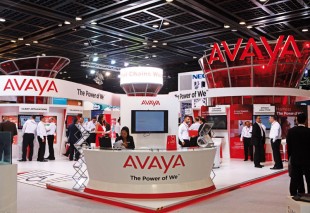Avaya has been showing off work-in-progress projects for Emirates NBD, Dubai Police and Dubai’s Roads and Transport Authority at its stand in GITEX, demonstrating new ways for organisations to interact with their customers.
One project is the visual IVR (interactive voice response) system for ENBD, which automatically replicates the IVR menus in visual form on a smartphone, when a user calls the bank. The only requirement from the user side is to have the ENBD app installed – otherwise, the IVR process remains the same, but without the need to listen to the options.
“Bank IVRs are complex, where you have to put in long numbers such as credit card numbers. What we’ve done is replicated the entire call-flow here – when you dial a number, all the information is pushed visually on the phone, so you don’t have to listen, then type, listen, then type. It becomes much simpler,” said Kuntal Shah, manager systems engineering at Avaya India.
“Unlike USSD [the interactive system commonly used by mobile operators for topping up and other functions], this can push HTML web pages, surveys, promotional messages, directly to the phone – all through back-end integration with the IVR. Tomorrow, if the IVR flow changes, you don’t have to do anything to update the visual IVR,” he added.
ENBD is currently working with Avaya to finalise the system, and the vendor estimates it should go live some time within the first half of 2016.
Also on show from Avaya were systems to allow emergency response call centre staff to interact with callers via a smartphone, including sending and receiving images, and transmitting precise location details, which is being developed for Dubai Police.
For the RTA, Avaya is working on smart kiosks, which include video chat facilities, as a means to improve customer experience.


